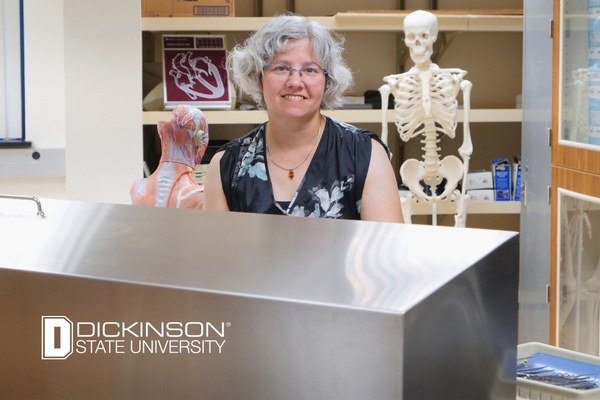Dickinson State University (DSU) is proud to announce the opening of a new cadaver laboratory in the Murphy Science building, a significant advancement in hands-on education for students in science and health-related fields. The lab features two human cadavers—one male and one female—and includes resources for dissection and detailed anatomical study.
This hands-on facility will serve students across multiple disciplines, including nursing, exercise science, and pre-medicine, providing real-world, experiential learning opportunities in human anatomy and physiology. In addition to student use, the lab will also support local emergency response professionals. The Dickinson Fire Department has partnered with the university to conduct emergency medical services (EMS) training in DSU’s academic spaces, and this lab will allow training with a special focus on airway management that wasn’t quite possible before.
“Access to this kind of facility enhances the realism and rigor of our EMS training,” said Jeremy Presnell, Dickinson Fire Chief. “Practicing airway techniques on human anatomy gives our responders a level of preparation that mannequins simply can’t replicate. This partnership with DSU directly improves community safety.”
The cadaver lab is part of a broader vision to elevate science education at DSU and attract students interested in careers in healthcare and science. By integrating advanced anatomical education into the curriculum, DSU is ensuring students gain a deeper understanding of the human body, better preparing them for graduate school and professional programs.
“This facility is a game-changer for student learning and success,” said Dr. Holly Gruhlke, Vice President of Academic Affairs. “Our students will enter their careers or medical programs with a depth of understanding that is usually only accessible at large research institutions. It sets DSU apart as a place where students can pursue science in a hands-on, meaningful way.”
The project was spearheaded by Dr. Liz Freedman, Dean of the School of Applied Sciences, whose vision and leadership helped bring the cadaver lab from concept to reality with the full support of DSU’s Academic Affairs division. The lab is made possible by a partnership with University of North Dakota’s Deeded Body Program through their School of Medicine and Health Sciences, as well as the North Dakota Economic Diversification Research Grant.
“This is a defining moment for our science programs,” said Dr. Freedman. “Our faculty are excited to teach in the lab, and our students are already eager to learn in it. This facility affirms our commitment to academic excellence and gives us the tools to recruit and retain top-tier students with career goals in medicine, allied health, and scientific research. We are grateful to the generous donors to the Deeded Body Program for providing this incredible learning opportunity to the next generation of healthcare workers.”
The cadaver lab not only strengthens DSU’s academic offerings, but also reinforces the university’s connection to the region’s workforce needs, aligning curriculum with the demands of healthcare, emergency services, and biomedical fields. Earlier this year, DSU unveiled its Virtual Cadaver Lab with a state-of-the-art Anatomage imaging table. Now, with the addition of the traditional Cadaver Lab, DSU is the only institution in North Dakota to offer its students both virtual and traditional hands-on medical cadaver training.

